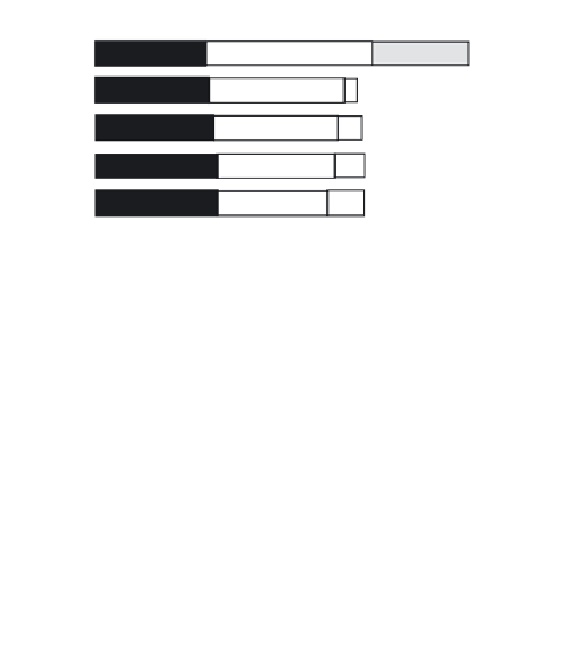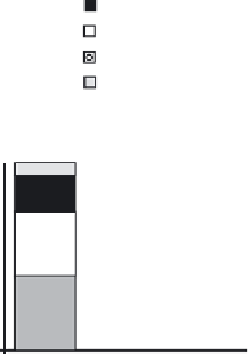Geoscience Reference
In-Depth Information
(a)
Niebla
60
59
58
57
56
0
20
40
60
80
100
Sediment source contribution (%)
Ore/waste
Historical alluvium
Volcanics
Quaternary/blue marls/limestone
Fig. 3.6
Examples of sediment fingerprinting
studies. (a) Results of fingerprinting for
sediments at Niebla, Río Tinto, Spain. Efficiency
(%) is a measure of the effectiveness of the
mixing model. The optimal efficiency is shown
at the top, and the four nearest efficiency steps
are also indicated. (Based on Schell et al. 2000,
fig. 26.4b.) (b) Weighted contributions of
woodland topsoil, pasture/moorland topsoil,
cultivated topsoil and channel bank/subsoil in
the suspended sediment load of Rivers Tweed,
Teviot and Ettrick, UK, from January 1996
to February 1997. (From Owens et al. 2000,
fig. 15.3a.)
(b)
100
Woodland topsoil
Pasture/moorland topsoil
Cultivated topsoil
Channel bank/subsoil
80
60
40
20
0
Tweed
Teviot
Ettrick
materials, in turn, depends on the underlying river
basin geology, the nature of soil-forming pro-
cesses (climate, typography, organisms) and types
of vegetation present. For example, Schell et al.
(2000) were able to show that a combination
of ore, mine waste, mine-derived alluvium and
bedrock, derived from natural weathering, con-
tributed to the fluvial sediment load in the mining-
affected Rio Tinto basin, Spain (Fig. 3.6a), through
the use of sediment fingerprinting techniques
(see section 3.2.1.2).
Many anthropogenic activities affect the com-
position of river sediments (Table 3.2). These
activities often add 'excess' amounts of sub-
stances, or 'contaminants', to river systems. The
concept of 'contaminant' has been defined in
Chapter 1. Contaminant concentrations of sedi-
ments are controlled by their abundance in the
rocks and soils of the basin (the 'background'
concentration) and by the addition, through
anthropogenic activities, of excess amounts of the
element or compound (the contamination). In
the case of artificial compounds (e.g. pesticides,
polychlorinated biphenyls (PCBs), some radio-
nuclides) the background figure is generally
zero, and contamination assessment is relatively
straightforward. Pre-industrial historical values
need to be established for elements with both
natural and anthropogenic sources, such as
metals. In rare cases, this can be accomplished
through analysis of archived samples, but in
most cases it is determined through the analysis
of sediments accumulated through time.
Table 3.2 lists the main types of sediment-bound
contaminants found in river systems. These are
grouped into metals and metalloids, inorganic
compounds, nutrients, organic compounds and
radionuclides. The partitioning of each of these
contaminants will be different, depending on their
geochemical properties and affinities for sorption
onto the different mineral and organic phases
present in suspended river sediment. This, in
turn, will affect the transport and storage of con-
taminants in river channels and floodplains.


























